IS YOUR WEBSITE ADA COMPLIANT? OUR FREE, CUSTOM ACCESSIBILITY STATEMENT FOR YOUR FIRM CAN HELP!
As a lawyer, marketing manager or compliance officer, it's crucial to understand the landscape of web accessibility, including potential barriers on your current website.
Fill Out This Form
Enhance your Digital Customer Experience
Qualify for a Tax Credit
Build a Disability-Friendly Brand Presence
Why do I need this Statement?
You can use this to create your own Accessibility Statement on your website that shares that they are aware of disability limitations and how to work with them. If a customer finds a disability digital barrier, they have away to contact your webmaster and get the information they need. This helps make your website ADA Compliant.
What do I do with this Statement?
Much like a Terms of Use, privacy policy, or cookie policy you find on all websites, websites that are ADA Compliant also have an accessibility policy with their accessibility statement. Many times people don’t know what to say. Many times they have not addressed ALL the accessibility issues on the website yet. That’s why our free one can be used to create your own.

Benefits Around Becoming More ADA Compliant with an Accessibility Statement
By including an accessibility statement, you indicate your awareness of these legal obligations and your dedication to meeting them, potentially reducing the risk of legal disputes and penalties. You also mitigate the risk of getting a letter of Demand or being targeted. Other Benefits Include:
Expand your audience.
Increase customer loyalty.
Improve user experience.
Meet legal requirements.
Boost SEO.
Demonstrate corporate social responsibility.
Reduce support costs.
Improve brand reputation.
Enhance usability for mobile users.
Stay ahead of the curve.

With an accessibility statement you can build trust, attract a wider audience, and establish your brand as a leader for those with disabilities.
57 Million Americans are Disabled
Common disabilities that benefit from web accessibility.
Visual Impairments: Users with visual impairments may find it difficult to read or navigate websites that do not have sufficient contrast, proper text formatting, or clear images.
Hearing Impairments: Users with hearing impairments may struggle to access audio content, including videos and podcasts, if they are not properly captioned or transcribed.
Motor Impairments: Users with motor impairments may have difficulty navigating websites that rely heavily on mouse-based interaction, or that have small clickable elements that are difficult to select with a mouse or touchpad.
Cognitive Disabilities: Users with cognitive disabilities may find it difficult to process complex information, navigate complex menus or forms, or understand overly technical or ambiguous language.
Language Barriers: Users who are not fluent in the language of the website may struggle to understand or navigate the content, particularly if there are no translation or localization options available.
Low Bandwidth: Users with slow internet connections may experience slow page loading times, which can be frustrating and may deter them from using the website.
Old or Outdated Technology: Users with older or outdated technology may struggle to access websites that require the latest browsers or plugins, or that use advanced web technologies that are not supported by older devices.
Temporary Disabilities: Users with temporary disabilities, such as a broken arm or a temporary vision impairment, may find it difficult to navigate websites that are not designed with accessibility in mind.
Environmental Factors: Users who are accessing websites in non-ideal environments, such as in bright sunlight or in a noisy public space, may struggle to read or interact with the content.
Device Compatibility: Users who are accessing websites on a mobile device or other non-standard device may struggle to navigate websites that are not optimized for their specific device or screen size.
Age-related Disabilities: Older users may experience a variety of age-related disabilities that can affect their ability to access websites, such as decreased vision, hearing loss, or reduced motor function.
Attitudinal Barriers: Users with disabilities may encounter attitudinal barriers, such as stigma, bias, or discrimination, that can make it difficult or uncomfortable to use websites that are not designed with accessibility in mind.
